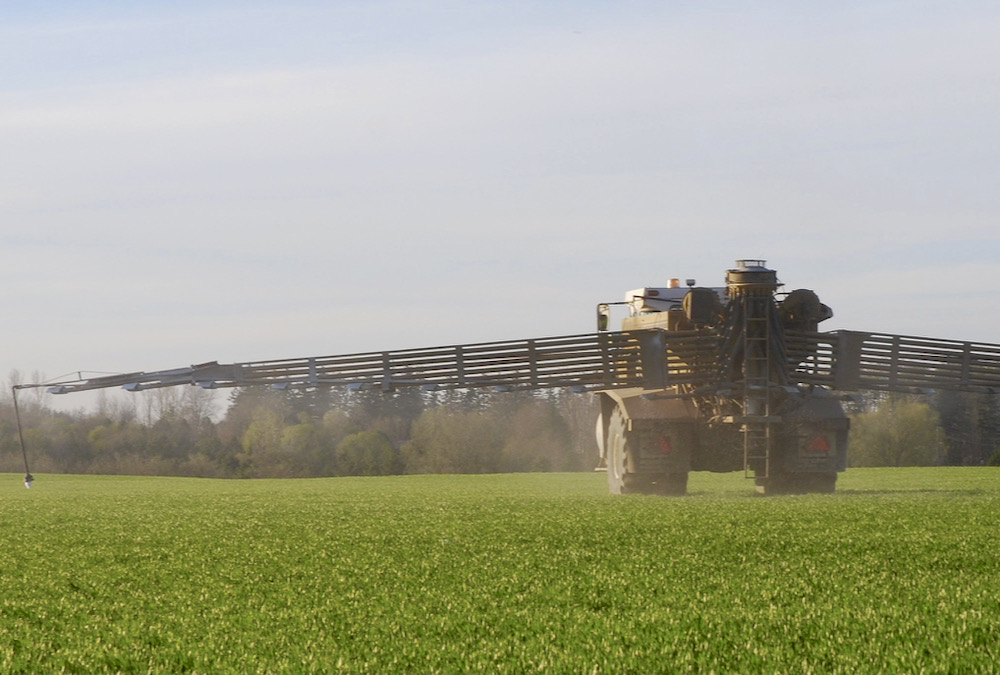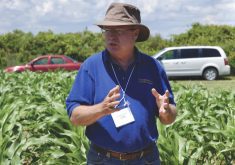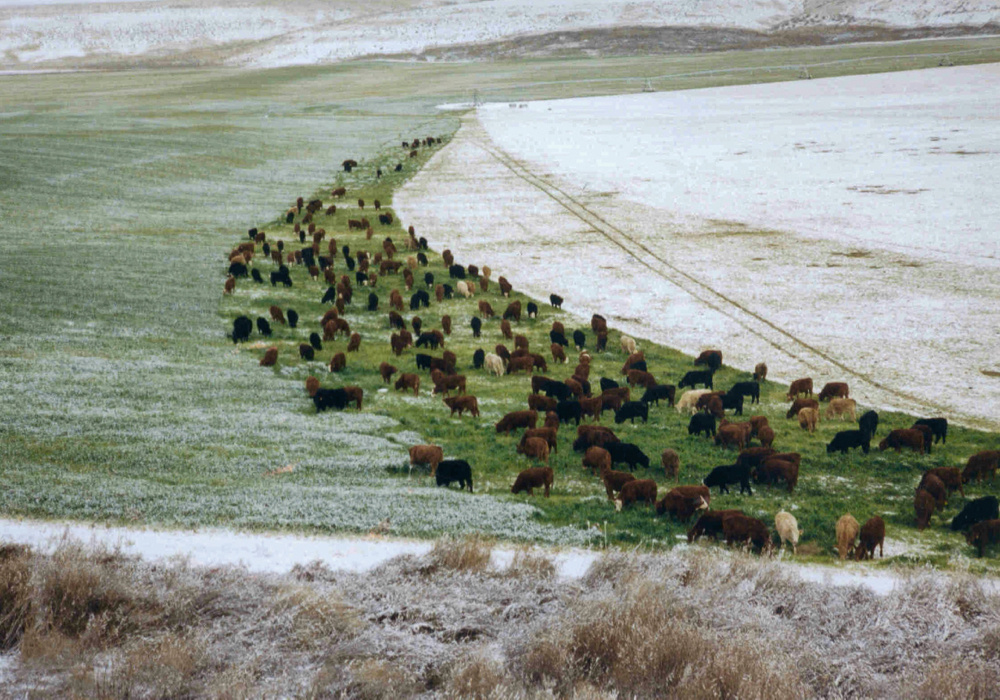For much of the past decade, a growing list of organizations have tried to build a link between soil health and soil test levels. They’ve wanted to raise awareness of the current status of soils on farms across Ontario, sometimes by pointing the way to higher productivity and profitability, and other times with a focus on remediation of soils that have been tilled or mono-cropped with negative and defined impacts on soil organic matter levels.
To take advantage of this push, many producers are upping their soil sampling programs.
Industry estimates say 25 to 30 per cent of cropland gets tested once every three years, although some say it’s lower at around 20 per cent.
Read Also

Riding the tariff roller-coaster
What producers are doing to minimize the risk created by ongoing trade uncertainty.
For one researcher, though, soil testing is still rife with uncertainty, and he explains why by saying you start with different test and extraction methods, then stir in different ways of measuring and interpreting soil nutrients.
Actually, according to Dr. John Lauzon, these are only a few of the inconsistencies that come with conventional tests to measure nitrogen, phosphorus and potash. And then there are all the other nutrients and micronutrients, which are often neglected or overlooked. For instance, there is no current reliable soil test for sulphur in Ontario, although such tests exist in other parts of the world.
The fourth major plant nutrient

Sulphur is a point of discussion at conferences and among agronomists and their farming clients. Yet until the early 2010s, sulphur applications weren’t considered necessary, given atmospheric deposition — acid rain — resulting from factory and industrial plant emissions in Ontario and the U.S. Midwest.
Typical amounts of SO4 deposited in Ontario soils were 30 to 50 kg per hectare (27 to 45 lbs. per acre) but dropped to less than 10 kg per hectare (nine lbs. per acre) after legislation to restrict emissions passed in Canada and the U.S. in the late 1980s.
The reduction of pollution is a good news story from an environmental perspective, but it has caused a reduction in deposition of sulphur in the past 10 to 15 years, and that can be a problem because farmers came to rely on rain-based deposition and began to forget about sulphur, despite its importance to crop development, production and quality.
The element is important, definitely. Sulphur is vital to the formation of chlorophyll that allows for photosynthesis, it aids in protein production and the synthesis of oils, and it is key in the activation of enzymes. It also improves quality in many crops, including milling and baking traits in cereals.
“My group has been working with sulphur response in Ontario since 2012,” says Lauzon, an associate professor in the School of Environmental Sciences at University of Guelph. “The work on a sulphur soil test started in 2017 with funding from the Grain Farmers of Ontario and the Ontario Ministry of Agriculture, Food and Rural Affairs (OMAFRA).”
Two big steps to advance
Lauzon adds there are two key parts to developing a soil test for sulphur. First is to find an extraction (laboratory) procedure that works well for the soils in a particular area. It’s an important aspect because changes in the nature of the soil and the area’s climate have an impact on an extraction’s functions. A procedure that works well in one jurisdiction may not work in another, so several procedures in the lab are needed to compare how they estimate plant uptake response to applied sulphur to determine the test that’s most likely to work in the region.
The second step involves in-field trials for plant-yield response related to the level of soil test sulphur found at a site. Once researchers have data from many sites, they can create a graph relating soil test sulphur to plant response with work specifically targeted to Ontario soils.
“Step one should be completed sometime this winter,” says Lauzon, noting his group has collected and stored soil samples from field trials they’ve been working with. “As soon as step one is completed, we can use the data from those sites to start populating the graphs for step two. We’re looking for individuals who are able to run simple trials with corn, soybean and winter wheat to improve our data set.”

Developing a sulphur soil test has had the same kind of challenge that once obstructed creating a nitrogen test, namely spatial temporal variation in the plant-available form. In sulphur, that plant-available form is sulphate (SO4), which is leachable and thus similar to nitrate (NO3). In spring, sulphate levels in soils will be low due to excess water from late fall through winter and spring. As soils warm and dry, decomposition of organic matter will begin releasing sulphate.
“This will result in sulphate levels changing from day to day from the release, and even though deposition has decreased, there’s still some variation in soil levels over time,” says Lauzon. “This makes it more challenging to predict what those levels mean in terms of nutrient requirements. Again, similar to the nitrogen soil test, the sulphur test will not pick up sulphur coming from manure or other organic amendments, adding another challenge to the interpretation of the soil test levels.”
There’s a difference from nitrogen, however. Sulphur is required in relatively small quantities and Lauzon doesn’t believe the sulphur test will zero in on a particular rate of application. It will simply indicate which fields are likely to require sulphur. The soil test will amount to a simple on-off switch for application.
“My research to date has indicated that if you simply applied sulphur to every field, it would result in a reduction in farm income,” he adds. “The fields that need it will benefit, but the ones that do not will have a bigger fertilizer bill.”
It’s not ‘cheap insurance’
That’s why Lauzon believes it’s critical to find a means of identifying responsive sites and developing inexpensive fertilization practices to get the benefits he sees in some fields without the cost in fields that don’t need it. Instead of using a supplementary product like elemental sulphur, ammonium sulphate, Sul-Po-Mag or others “just in case,” growers may be the applying sulphur where it’s not needed.
“I’m sure there are some fields that don’t receive sulphur that would benefit,” Lauzon says. “Our work to date has indicated that for corn and wheat, there were economically responsive sites. However, if sulphur had to be applied to all sites, there would be an economic loss to sulphur fertilization, on average.”
In soybeans, only one of 21 field sites responded to sulphur, underscoring the message Lauzon is trying to share. Just because deposition is lower does not mean every field needs sulphur applied to every crop. In particular, it points to the greater need to establish a means of identifying responsive sites or developing cheaper sulphur fertilization practices.
“I believe (a sulphur soil test) will help a lot of growers,” says Lauzon. “There are some who only consider the possibility of yield loss from not applying and not the cost to them of the fertilizer. Both need to be considered to come up with the best approach for a given field.”
In the meantime, the work on developing that test continues. Again, anyone interested in helping to develop a soil sulphur soil test is asked to contact Dr. John Lauzon, University of Guelph, (519) 824-4120 (ext. 52459) or e-mail at [email protected].
















